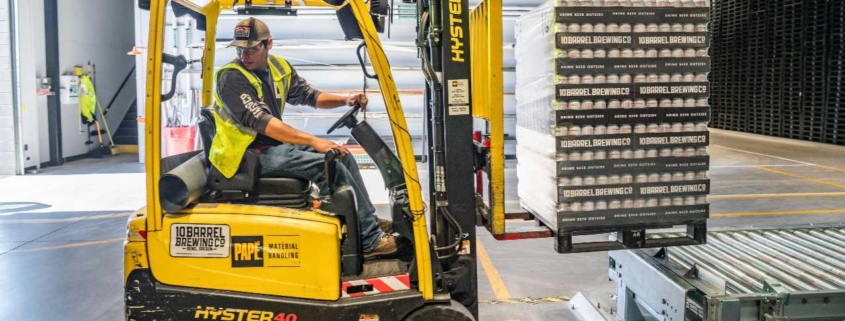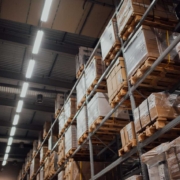how to optimize my warehouse
Every warehouse and fulfillment center faces significant challenges every year. But few were prepared for the sudden shift of online purchases caused by the Covid pandemic.<!–more
E-commerce requirements
Many warehouses probably got the job done at a much higher cost by using mostly work volume. But you also saw delivery times increase at many warehouses. Meanwhile, the costs and inefficiencies were taken for granted. But this trend now appears to be structural. Not only because the pandemic is still raging. In the US, online sales increased by no less than 39% compared to the previous year. An unprecedented increase and the forecast for the coming year show the same picture. High time, therefore, for warehouse managers to tackle inefficiencies. Fortunately, this does not always have to mean large and long-term investments. Small steps still prove to be very effective
Lean and clean
It is often the worry child within warehouses. “We don’t have time for it”, because we are so busy. But clean and tidy warehouses are more efficient and YOU win time with it. Think about stray pallets or waste boxes taking up space. Dust and dirt can not only damage your product. Your equipment also suffers from dust and dirt, increasing machine downtime. So implement a cleanup schedule and make sure your warehouse is clean & Lean every day.
Quick crossdock
Today’s ERP and WMS systems require that incoming goods are always stocked/stored before they can be shipped again. For backorders or small regular orders [< 5] this is inconvenient. So look for a solution to cross-dock these items immediately as well. So new label on it and straight out the door again.
Labels
Labels are, despite their great importance, often an undervalued aspect. Perhaps because it has become so commonplace. Inefficiencies in the label process can be found in the number of mouse clicks an employee has to perform to print a label. [But also the distance to the label printer that has to be walked every time. Also adjusting formats is often very difficult and time consuming. Check with your supplier and set user-friendliness requirements for these aspects. Printing labels, packing slips etc. is one of the most common activities in a warehouse. So these processes in particular should be child’s play.
Location optimization
Many WMS systems already have the option. The optimal layout of the warehouse based on volume and demand. So items with high order volumes, placed closer and concentrated in the warehouse so that picking goes a lot faster. If you do not have this option, manual intervention is required. Don’t hesitate and analyze your stock on this. It will save you a lot of time.
Distance
Another thing that is sometimes forgotten is the distances that employees often have to travel to do their jobs. Often employees have to walk back and forth between computer, printers and their actual workstation. This is disruptive, encourages errors and costs more time than you think. You can achieve this by setting up mobile workstations, for example. Stations that have all the necessary facilities. Or setting up a workstation close to the employees’ workplace. This is not only more pleasant work for the employees. It reduces the number of errors, the process becomes more stable and saves a lot of process time.
Unlike the pandemic, e-commerce shows no signs of slowing down. Efforts to optimize warehouse processes need not be time-consuming or expensive. Often, small steps, offer big improvements.
Read also:








